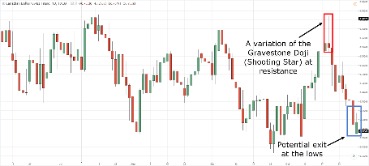
This movement is often analyzed with respect to price changes in the recent past. The next step in trading price action forex is to look for price action patterns. Price action patterns are formed by the continuous buying and selling of currencies by traders and investors. These patterns can indicate a potential reversal or continuation of the trend. There are different price action patterns such as pin bars, engulfing bars, and inside bars. Price action traders believe that price movements are not random and that they follow a specific pattern.
On the other hand, you can short the asset if the price is going to fall. As a price action trader, you cannot rely on other off-chart indicators to provide you clues that a formation is false. However, since you live in the “now” and are reacting to directly what is in front of you, you must have strict rules to know when to get out. In this post, we’ll examine a handful of the best price action strategies and patterns to help you develop your “chart eye”. We’ve also put together a short video to help with some of the advanced concepts we discuss.
Determine Trending VS. Consolidating markets using price action
These levels act as potential turning points and can be used to plan trades and set profit targets. Price action signals – sometimes called price action patterns, or price action triggers – are easily-recognisable patterns in a market, which can be used to predict future market behaviour. Experienced traders can sometimes spot these signals at a glance by recognising certain shapes or repetitions in past performance. And because false breakouts can be so abundant, traders need to look at more aggressive risk-reward ratios like 1-4 or 1-5 (risking one dollar to make four or five). While there are different types of triangles, most traders look to trade these periods by anticipating a breakout. Below is the ‘Descending Triangle,’ in which price has respected a horizontal support level while offering a down-ward sloping trend-line.
USD/CAD: Price Velocity Creates Dangerous Speculative Trades – DailyForex.com
USD/CAD: Price Velocity Creates Dangerous Speculative Trades.
Posted: Tue, 05 Sep 2023 10:24:49 GMT [source]
The Relative Strength Index (RSI) is a momentum oscillator that measures the speed and change of price movements. By analyzing overbought and oversold conditions, the RSI can indicate potential trend reversals. When combined with price action analysis, traders can look for divergences between the RSI and price, which may suggest a weakening trend and potential trading opportunities. If price action trading is the study of price movements, price action trend trading is the study of trends. Traders can make use of a number of trading techniques to spot and follow price action trends such as the head and shoulders trade reversal. Price action trading is a strategy that helps to predict market movements by spotting patterns or ‘signals’ in the price movements of an underlying market.
How To Use Price Action In Forex Trading
Please ensure you understand how this product works and whether you can afford to take the high risk of losing money. So traders have a few options when it comes to managing risk in breakout positions. The more common approach is to look for a stop within the previous range before the breakout might take place.
Aussie Finally Stems Its Losses – Action Forex
Aussie Finally Stems Its Losses.
Posted: Mon, 28 Aug 2023 07:11:15 GMT [source]
Forex price action is a trading technique that studies the movements of the prices of currency pairs in the forex market. It involves analyzing the patterns and shapes the prices form on a chart without using indicators or fundamentals. Instead, price action traders rely on candlestick patterns, support and resistance levels, trendlines and other visual cues to spot trading opportunities. They believe that the price movements sufficiently reflect the market’s supply and demand forces, as well as the emotions and psychology of the traders. When you understand how the prices behave, you can anticipate future price movements and make trading decisions accordingly. In conclusion, price action analysis is a powerful tool for forex traders seeking to make informed trading decisions.
Inside bar
This strategy entails capitalizing on price movements that surpass significant support or resistance levels, signaling a possible shift in market sentiment. Breakouts can be triggered by news events, increased trading volume or specific chart patterns. Traders confirm breakouts by analyzing price bars, candlestick patterns or volume indicators. Once a breakout is confirmed, traders set a target for potential profits and establish a stop loss to manage risk. When it comes to analyzing the forex market, understanding price action is crucial.

You will set your morning range within the first hour, then the rest of the day is just a series of head fakes. A bullish trend develops when there is a grouping of candlesticks that extend up and to the right. At first glance, it can almost be as intimidating as a chart full of indicators. Like anything in life, we build dependencies and handicaps from the pain of real-life experiences.
If the trending wave is bigger than a corrective wave, it means that a trend is making progress. There are many different ways to trade price action in forex, but some of the most common ones follow. Notice how the price barely peaked below the how to trade price action in forex key pivot point and then rallied back above the resistance level. In order to protect yourself, you can place your stop below the break down level to avoid a blow-up trade. One thing to consider is placing your stop above or below key levels.
Outside bars
If you’re interested in learning how I trade with simple price action strategies, checkout my Price Action Trading Course for more info. Combining price action with technical indicators allows traders to leverage the strengths of both approaches and make more well-rounded trading decisions. Position sizing is another crucial aspect of risk management in price action trading. Traders need to determine the appropriate position size for each trade based on their risk tolerance and the distance between their entry point and stop-loss level. Interpreting candlestick patterns requires a combination of observation and understanding market psychology. For example, a doji candlestick, which has a small body and equal or near-equal open and close prices, often signifies indecision in the market.
- As a trader, it’s easy to let your emotions, and more specifically – hope, take over your sense of logic.
- These patterns can indicate a potential reversal or continuation of the trend.
- When it comes to analyzing the forex market, understanding price action is crucial.
- Candlesticks are the most popular form of charting in today’s trading world.
Some end up swearing by price action, having excellent results and arguing that less is more. Still, this doesn’t mean these strategies suit everyone, especially beginners. Price action strategies require a refined eye and a level of market intuition gained only after spending hundreds of hours observing the price movement. For most of them, it is a journey through different strategies to find out what suits them the best. Eventually, they wake up one day realizing their charts are a cluttered mess, not helping but negatively impacting their performance.
Whether an economic variable is filtered down through a human trader or a computer trader, the movement that it creates in the market will be easily visible on a price chart. Price action analysis can be complemented by the use of technical indicators to enhance trading decisions. While price action focuses on the behavior of price itself, technical indicators https://g-markets.net/ provide additional insights into market conditions and trends. Price action trading is considered a “pure” form of technical analysis and sometimes known as “naked trading” since a price action trader uses a price chart without any technical indicators. Technical analysis uses a range of different calculations to predict future price movements.
What is Price Action?
As the name suggests, the head and shoulders pattern is a market movement that looks a bit like the silhouette of a head and shoulders. In other words, prices rise, fall, rise even further, fall again, and rise to a lower high before a modest drop. Traders can use this as a signal to act, taking a long position if the stock is trending upwards or breaks above the resistance line, or a short position if it moves below the support line.
The next step in trading price action forex is to wait for confirmation. Confirmation is when the price of a currency pair breaks through a key level or forms a price action pattern. By waiting for confirmation, traders can avoid false signals and increase their chances of making profitable trades. In price action trading, you have to seek patterns and recognise the key indicators that can influence your investments.
In addition to the disclaimer below, the material on this page does not contain a record of our trading prices, or an offer of, or solicitation for, a transaction in any financial instrument. IG accepts no responsibility for any use that may be made of these comments and for any consequences that result. No representation or warranty is given as to the accuracy or completeness of this information. Consequently any person acting on it does so entirely at their own risk.
Identify key support and resistance levels, which act as barriers to price movement. Support levels are where the price tends to bounce up, while resistance levels are where the price tends to bounce down. Tools like horizontal lines, trend lines, Fibonacci retracement levels or pivot points can assist in determining these levels. Price action trading strategies are dependent solely upon the interpretation of candles, candlestick patterns, support, and resistance, pivot point analysis, Elliott Wave Theory, and chart patterns[1]. It is often confused with Volume and Price Analysis (VPA), where volume is interpreted with the price action to paint a clearer picture of the stock’s story.
